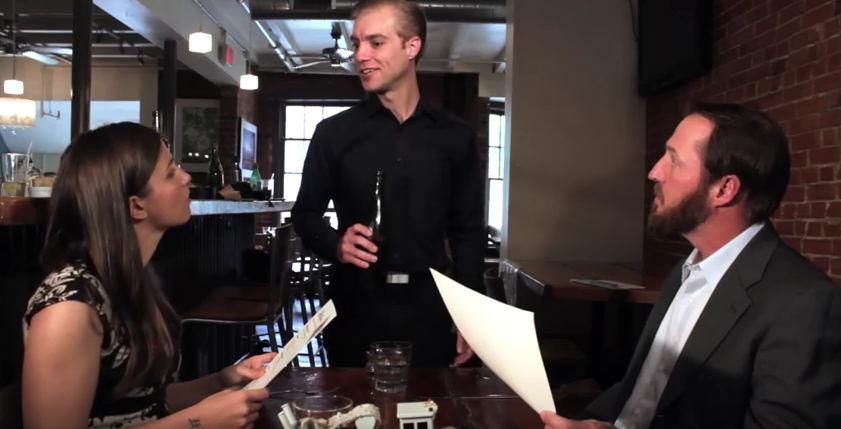For Immediate Release
CONTACT:
Joanna Nasar
Communications Director
Turtle Island Restoration Network
Cell: (415) 488-7711
Joanna@SeaTurtles.Org
Turtle Island’s Public Service Announcement Calls Consumer Attention to California’s Driftnet Fishery for Swordfish, One of Worst in the Nation for Marine Mammals
Olema, Calif. (January 28, 2016) – The ocean and marine conservation organization, Turtle Island Restoration Network released a Public Service Announcement video (watch here) to call consumers attention to the impact of ordering a California driftnet caught swordfish.
“Transparency is key to allowing consumers to make informed decision about their health and our oceans health. Our PSA lifts the curtain of secrecy around this fishery and shows diners the power they have to make smart seafood choices by saying ‘no’ to California driftnet-caught swordfish,” said Joanna Nasar, communications director at Turtle Island Restoration Network (SeaTurtles.Org).
In the video featuring actors Christopher Shelton, Matthew Wilburn King, and Dana Padgett, the non-profit organization shows how the California driftnet fishery for swordfish is among the most wasteful fisheries in the world in terms of bycatch (unwanted animals caught and discarded); and highlights the fact that swordfish is high in toxic mercury.
“Our new PSA educates consumers on the fact that California’s driftnet fishery kills more whales and dolphins than any other on the West Coast, and shows the true price of a swordfish dinner,” said Todd Steiner, biologist and executive director of Turtle Island Restoration Network.
As Turtle Island’s new report shows, the California driftnet fishery is a serious threat to marine mammals, sea turtles and sharks; targets toxic high-in-mercury fish; is a net drag on California’s economy; and hampers efforts to clean up international fishing practices. The new PSA educates consumers and diners about how choices they make impact their own health and California’s oceans and marine wildlife. All actors and crew volunteered their time and expertise to create this important PSA video, which was generously supported by the Futurity Foundation, http://futurityfoundation.org, and space for filming was provided by Café Aion, http://www.cafeaion.com, in Boulder, Colo.
“Turtle Island’s choice to educate American consumers about the impact of driftnets on our fisheries, and the practice’s unforgiving slaughter of sea turtles, dolphins, whales, and sharks is critical to maintaining healthy oceans,” said Dr. Matthew King is Founder and President of the Futurity Foundation and Affiliate Faculty of Environmental Studies at the University of Colorado, Boulder. “Given that Americans no longer trust government nor corporations to do what’s best for the people, at least we can still depend on the American people to do what’s right for the oceans; put an end to driftnets.”
Background on the California Driftnet Fishery
Today, the driftnet fishery in California consists of roughly 20 fishing vessels. The vessels set out nets the size of the Golden Gate Bridge to float overnight and indiscriminately catch whatever swims into their nets.[i] The California driftnet fishery kills or injures approximately seven times more whales and dolphins than all other observed fisheries in California, Oregon, Washington, and Alaska combined, and 13 times more than any other single observed fishery on the West Coast.[ii] The fishery has killed an estimated 16 endangered sperm whales in the last decade. Recent stock assessments suggest that this take is more than the population can sustain from all sources combined, much less from a single fishery.[iii] In total, an estimated 885 marine mammals have been killed in the past decade alone. [iv] Driftnets are banned by the United Nations, on the high seas, by a host of countries, and throughout the United States. Turtle Island’s new report shows that it is time for California to phase out this outdated and ineffective method.
Watch the PSA on YouTube here.
Download the Driftnet Overview Report here (.pdf).
###
Turtle Island Restoration Network works to mobilize people and communities around the world to protect marine wildlife, the oceans and the inland waterways that sustain them. Join us on Twitter, Facebook and YouTube. SeaTurtles.Org
[i][i] i. 50 C.F.R. § 660.713, and Stock Assessment and Fisheries Evaluations (SAFE) Report, Pacific Fisheries Management Council, available at http://www.pcouncil.org/highly-migratory-species/stock-assessment-and-fishery-evaluation-safe-documents/current-hms-safe-document/
[ii] NOAA Observer Program data, http://www.westcoast.fisheries.noaa.gov/fisheries/wc_observer_programs/sw_observer_program_info/data_summ_report_sw_observer_fish.html
[iii] NOAA Observer Program data http://www.westcoast.fisheries.noaa.gov/fisheries/wc_observer_programs/sw_observer_program_info/data_summ_report_sw_observer_fish.html and 2012 Stock Assessment Report, Sperm Whale California/Oregon/Washington Stock, http://www.nmfs.noaa.gov/pr/pdfs/sars/po2012whsp-cow.pdf
[iv] See high priority species bycatch per set, from Highly Migratory Species management Team Report on Swordfish Fishery Management and Monitoring Plan including Management Alternatives,Table 13, Agenda Item E.3, June 2015 PFMC Meeting, available at http://www.pcouncil.org /wp-content/uploads/2015/05/E3a_HMSMT_Rpt_HardCaps_JUN2015BB.pdf




